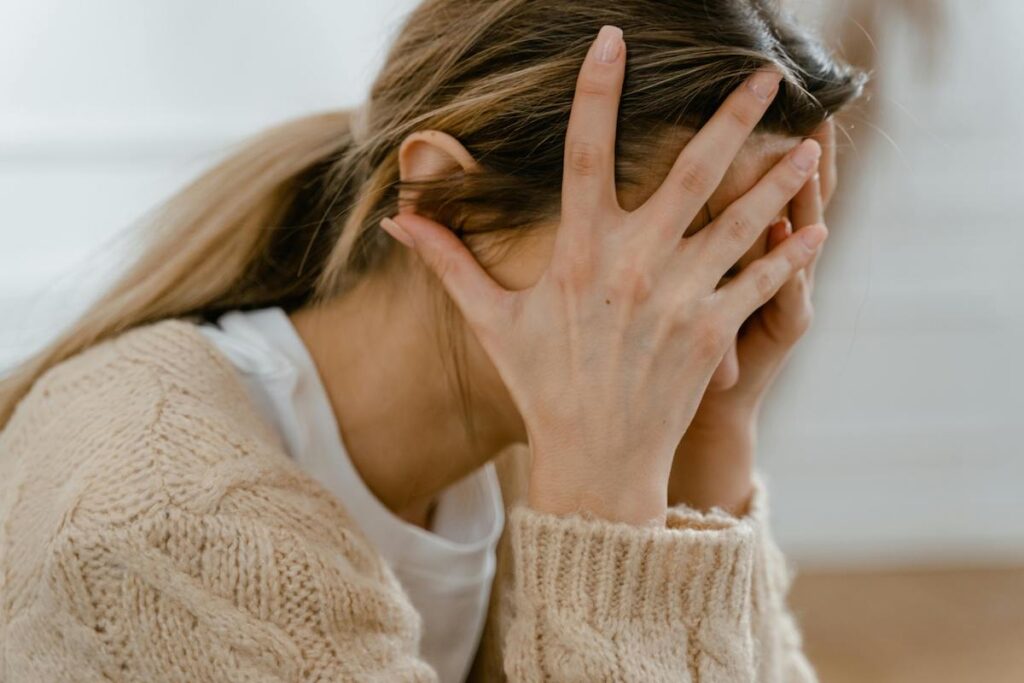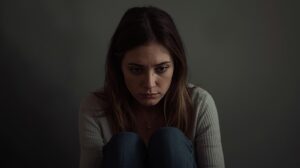Understanding the Weight of Anxiety
Anxiety isn’t just worry. For many women, it’s an overwhelming and persistent tension that can affect nearly every part of daily life. From difficulty sleeping to a constant sense of dread, anxiety often shows up in ways that feel both physical and emotional. It can make routine tasks exhausting, relationships harder to maintain, and self-esteem plummet. Women tend to experience anxiety disorders at higher rates than men, and it isn’t because they’re less capable. It’s often because of the unique social pressures, hormonal fluctuations, caregiving roles, and life transitions they face. These factors can add layers of stress that build over time.
Mental health treatment provides real solutions—not just coping techniques, but lasting tools to manage anxiety and feel safe again in your own mind.
Why Women Experience Anxiety Differently
Every person’s experience with anxiety is deeply personal. But there are patterns in how it shows up in women. For some, it’s tied to body image concerns or perfectionism. Others may trace it to past trauma, caregiving burnout, or even hormonal changes during pregnancy or menopause.
Women are also more likely to internalize their distress. This means the anxiety doesn’t always come out as visible panic but instead shows up as chronic worry, irritability, or self-doubt. It can be easy for others to overlook, and even easier for the woman experiencing it to minimize what she’s going through.
This is why gender-specific care matters. Treatment built around women’s lived experiences offers understanding and support that makes healing more effective.
The Emotional Toll of Silent Struggle
For many women, anxiety is something they try to power through. The world often tells them to “be strong,” to keep juggling the responsibilities of family, work, and caregiving without falling apart. But inside, they might feel like they’re barely holding it together. This kind of silent suffering takes a toll. It can lead to burnout, physical symptoms like headaches or fatigue, and emotional withdrawal. Over time, untreated anxiety can spiral into depression, strained relationships, or increased reliance on unhealthy coping mechanisms.
Getting help isn’t a sign of weakness. It’s a decision to stop surviving and start truly living.
How Mental Health Treatment Creates Real Change
The good news is that anxiety doesn’t have to rule your life. Mental health treatment gives women the structure, support, and skills needed to manage anxiety long-term. Treatment often begins with a comprehensive assessment to understand the nature of your anxiety, its triggers, and any co-occurring mental health conditions. From there, a plan is built that focuses on healing—not just symptom management. Women’s mental health programs, like the one offered at The Wave of Edgewater, are designed to help women feel safe, understood, and supported. With the right help, anxiety becomes something manageable—not something that defines your life.
Types of Therapy That Help Manage Anxiety in Women
Several therapeutic approaches are particularly effective for managing anxiety in women. These include:
Cognitive Behavioral Therapy (CBT) focuses on identifying and challenging negative thought patterns that fuel anxiety. It teaches healthier ways of thinking and reacting to stress.
Dialectical Behavior Therapy (DBT) helps women manage emotional sensitivity, build distress tolerance, and improve relationships. It’s especially helpful for those who feel emotions intensely.
Individual Therapy provides a private space to explore personal struggles, past trauma, and internal fears. It’s one-on-one care built entirely around your needs.
Group Therapy offers connection. Sharing space with other women who are also working through anxiety builds community and reduces isolation.
Mindfulness and grounding practices are often integrated into treatment to help reduce panic and restore calm in real-time.
The Role of Safe, Women-Only Environments
Being in a treatment setting that is just for women creates a sense of emotional safety. There’s no pressure to explain gendered experiences or hide parts of your story. You can be open about how anxiety is affecting you, knowing you’re surrounded by people who truly get it.
Women-only programs also eliminate distractions or discomfort that might arise in mixed-gender groups, allowing for more vulnerability and deeper healing. At The Wave of Edgewater, our entire approach is built around helping women feel empowered. We recognize how anxiety weaves into self-image, relationships, trauma history, and daily stress. And we treat each woman with care and respect.
What Anxiety Treatment Looks Like Day-to-Day
When you enter a mental health program, the structure can be both comforting and transformative. A typical day might include individual therapy in the morning, group sessions in the afternoon, and wellness activities like yoga or mindfulness to round out the day.
Meals are shared, breaks are built in, and every part of the day is designed with healing in mind. The goal isn’t just to reduce symptoms, but to rebuild a foundation of calm and confidence.
Over time, many women find their anxiety lessens. They sleep better. They laugh more. They begin to trust themselves again.
Building Coping Skills That Last
One of the most powerful parts of treatment is the focus on building coping tools that work outside of the program. These are skills you can carry into your daily life—how to ground yourself in a moment of panic, how to communicate your needs, how to manage intrusive thoughts without spiraling. You’ll also work on identifying what triggers your anxiety and creating a plan for how to respond to those triggers with self-care rather than fear.
These aren’t just “tools.” They are life-changers.
Anxiety, Self-Worth, and Recover
Anxiety has a way of eroding your sense of self. It can make you question your worth, doubt your abilities, and shrink from opportunities.
But treatment helps restore that confidence. You learn that your anxiety doesn’t mean you’re broken. It means your system has been in survival mode, and now it’s time to rest, reset, and rebuild.
With the right care, women often rediscover who they were before anxiety took over—or even meet a stronger version of themselves.
What to Expect After Treatment
Anxiety doesn’t vanish overnight. But after treatment, many women describe a shift. The anxiety is no longer all-consuming. When it arises, they know how to respond. They’re better equipped, more grounded, and more aware of their needs. Ongoing therapy, support groups, and aftercare help maintain this progress. Healing is a continuous process, but it becomes easier with each step. At The Wave of Edgewater, we walk with you far beyond your first session. Because recovery doesn’t end—it evolves.
You Don’t Have to Do It Alon
If you’re a woman struggling with anxiety, know this: help is available. You don’t have to carry it by yourself. There are spaces built just for you. There are people who understand and want to help you reclaim peace in your life. Whether you’ve just started thinking about treatment or you’re ready to take the next step, you’re not alone. The support is here.
Anxiety in women is more than just a mental health condition—it’s a signal that something needs care. With the right environment, the right people, and the right plan, healing is possible. You can feel calm again. You can feel whole.
And it all starts by reaching out.



